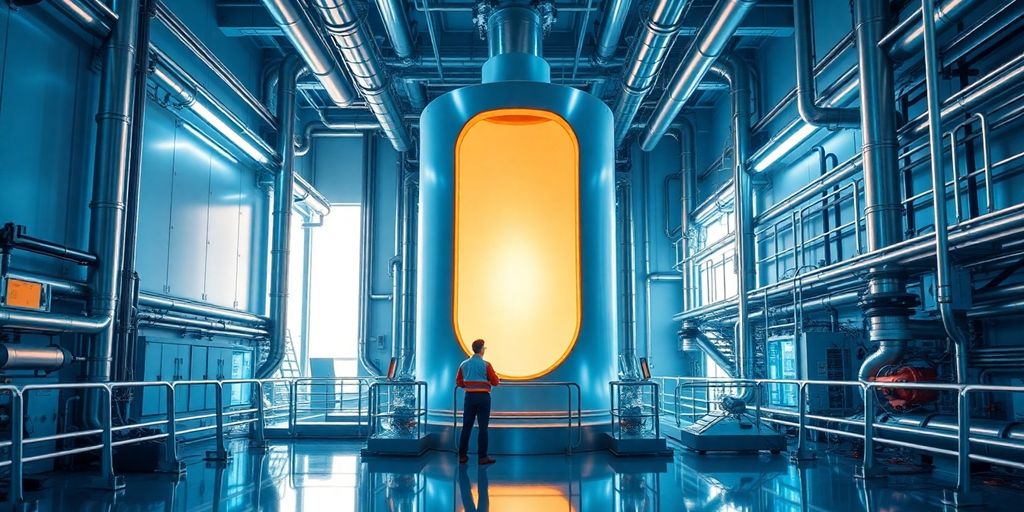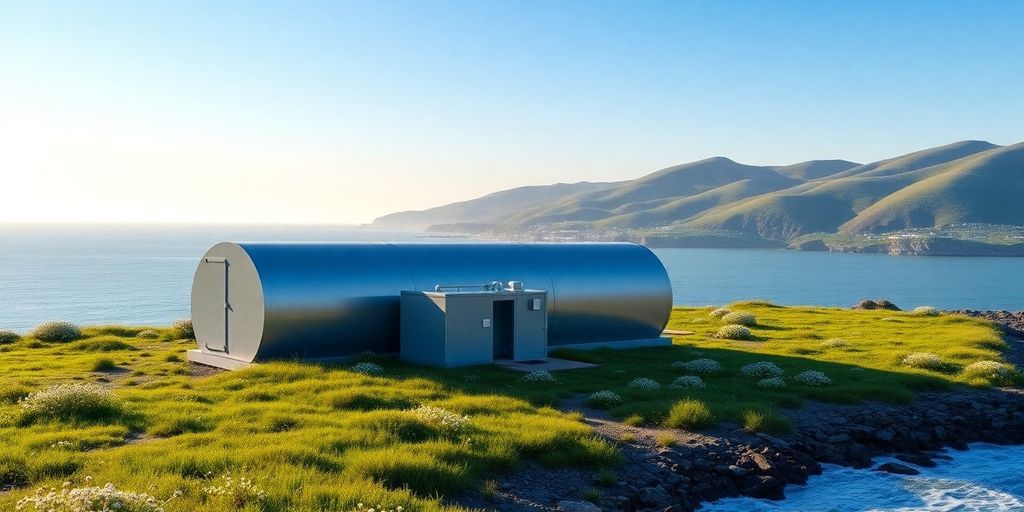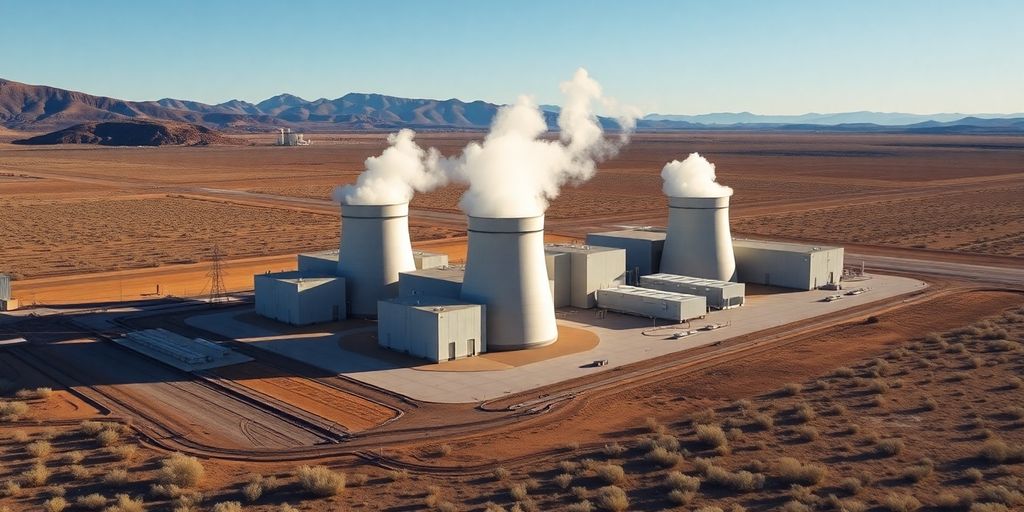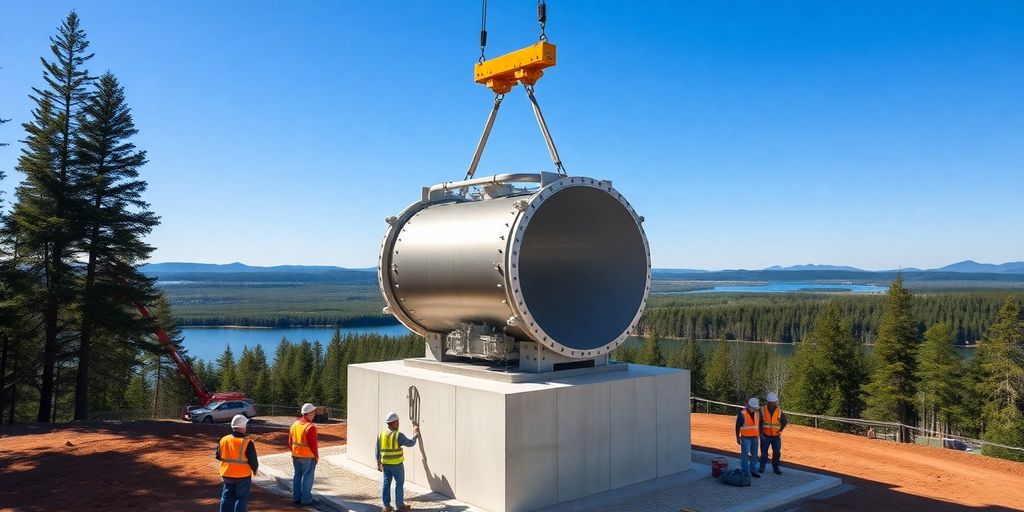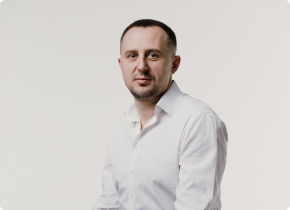I’ve been poking around the world of Advanced Reactors lately, and it’s wild how many new ideas are popping up. From salt-based cores to smarter safety nets, these next-gen plants could shake up our power game. Here’s a quick look at the big trends you need to know.
Key Takeaways
- Core concepts like molten salt, high-temp gas, and liquid metal designs promise better heat use and fewer parts.
- New safety measures rely on passive cooling, stronger shields, and quake-proof builds to cut risks.
- Shifts in fuel, from thorium breeding to recycled plutonium and high-assay LEU, aim to trim waste.
- Digital layers such as AI checks, digital twins, and tight cybersecurity help catch issues fast.
- Building reactors in modules, teaming up on funding, and smoother rules worldwide can speed projects and cut costs.
Advanced Reactors: Innovative Core Designs
Advanced reactors are pushing the boundaries of nuclear technology with novel core designs. These designs aim to improve efficiency, safety, and sustainability compared to traditional reactors. Let’s take a look at some of the most promising configurations.
Molten Salt Configuration Advantages
Molten Salt Reactors (MSRs) use liquid salt, typically fluoride or chloride salts, as both the fuel carrier and coolant. This unique setup offers several advantages.
- Enhanced safety due to the low vapor pressure of the salt, reducing the risk of explosions.
- Improved fuel utilization, as MSRs can operate at higher temperatures and burn a wider range of fuels, including thorium.
- Online refueling capabilities, allowing for continuous operation and higher plant availability.
MSRs represent a significant departure from traditional solid-fueled reactors. Their fluid fuel form enables unique safety features and fuel cycle options, potentially leading to a more sustainable and proliferation-resistant nuclear energy system.
High-Temperature Gas Cooled Features
High-Temperature Gas-Cooled Reactors (HTGRs) use graphite as a moderator and helium as a coolant. This combination allows for very high operating temperatures.
- High thermal efficiency, leading to better electricity generation.
- Passive safety features, such as natural convection cooling, which can remove heat even without power.
- Potential for process heat applications, like hydrogen production or industrial heating.
| Feature | Description |
|---|---|
| Coolant | Helium |
| Moderator | Graphite |
| Outlet Temperature | Up to 750-1000°C |
| Fuel | TRISO particles (uranium kernels coated with multiple layers of ceramic) |
Liquid Metal Fast Reactor Characteristics
Liquid Metal Fast Reactors (LMFRs) use liquid metal, typically sodium, as a coolant and operate with fast neutrons. This allows them to breed fuel and consume long-lived radioactive waste. The advanced nuclear reactor designs are really something.
- Efficient fuel breeding, creating more fuel than they consume.
- Waste reduction by transmuting long-lived actinides into shorter-lived or stable isotopes.
- High power density, leading to compact reactor designs.
- High thermal conductivity of liquid metal coolants allows for efficient heat removal.
- Fast neutron spectrum enables breeding and transmutation capabilities.
- Requires careful management of sodium reactivity and potential for sodium-water reactions.
Advanced Reactors: Pioneering Safety Systems
Advanced reactors are pushing the boundaries of nuclear safety, moving beyond traditional designs to incorporate innovative systems. These advancements aim to minimize risks and enhance overall reliability, ensuring a safer future for nuclear power generation. It’s not just about doing the same things better; it’s about rethinking the entire approach to safety.
Passive Decay Heat Removal
One of the key features of advanced reactors is their reliance on passive safety systems. These systems don’t require active intervention or external power to function, making them incredibly reliable in emergency situations. For example, passive decay heat removal systems use natural convection to cool the reactor core, preventing meltdowns even if all power is lost. This is a huge step up from older reactors that rely on pumps and other active components that could fail.
Advanced Radiation Shielding Materials
New materials are being developed to provide better radiation shielding. These materials are more effective at blocking radiation, reducing the risk of exposure to workers and the public. Some examples include:
- High-density concretes with specialized additives
- Metal alloys with enhanced neutron absorption capabilities
- Composite materials that combine different shielding properties
These materials not only improve safety but can also reduce the size and cost of reactor containment structures. The Argonne National Laboratory is at the forefront of this research.
Seismic Resilience Engineering
Advanced reactors are designed to withstand earthquakes and other seismic events. This involves:
- Strengthening the reactor structure to resist ground motion
- Designing components to withstand vibrations and shocks
- Implementing seismic monitoring systems to detect and respond to earthquakes
The goal is to ensure that the reactor can safely shut down and remain stable even in the event of a major earthquake. This is particularly important for reactors located in seismically active regions.
Automated Emergency Control
Automated emergency control systems are designed to quickly and effectively respond to abnormal conditions. These systems use sensors and computer algorithms to detect problems and take corrective actions, such as shutting down the reactor or activating safety systems. The benefits are:
- Faster response times compared to manual operation
- Reduced risk of human error
- Improved overall safety and reliability
These systems are a critical part of the overall safety strategy for advanced reactors. They provide an extra layer of protection, ensuring that the reactor can safely handle unexpected events. The development of these systems involves complex optimization simulation to ensure they function correctly in all scenarios.
Advanced Reactors: Sustainable Fuel Cycles
Advanced reactor designs are pushing the boundaries of what’s possible with nuclear fuel. We’re not just talking about incremental improvements; we’re looking at entirely new ways to power our world while minimizing waste and maximizing resource use. It’s a game changer, really.
Thorium Breeding Potential
Thorium is way more abundant than uranium, and that’s a big deal. Advanced reactors can use thorium to breed fissile material, essentially creating more fuel as they operate. This could drastically extend the lifespan of nuclear fuel resources. Think of it like a self-sustaining cycle. Plus, thorium cycles produce less plutonium and other long-lived radioactive waste, which simplifies waste management. It’s a win-win.
Recycled Plutonium Utilization
Instead of burying used nuclear fuel, advanced reactors can recycle the plutonium it contains. This closes the fuel cycle, reducing the amount of high-level waste that needs long-term storage. It’s like taking out the trash and turning it into something useful.
- Reduces the volume of high-level waste.
- Extracts additional energy from existing fuel.
- Decreases the need for fresh uranium mining.
Reusing plutonium isn’t just about getting more energy; it’s about being responsible with the resources we have and minimizing the environmental impact of nuclear power. It’s a step towards a more sustainable future.
High-Assay Low-Enriched Uranium Benefits
High-Assay Low-Enriched Uranium (HALEU) is enriched to between 5% and 20% uranium-235, which is higher than the fuel used in most current reactors but still below the level needed for weapons. WPFC workshops are important for discussing the benefits of HALEU. HALEU allows for more compact reactor designs, longer operating cycles, and improved fuel utilization. It’s like upgrading to a more efficient engine for your car. The benefits include:
- Increased power density
- Extended refueling intervals
- Improved economic performance
Here’s a simple comparison:
| Feature | Current Reactor Fuel | HALEU Fuel |
|---|---|---|
| Enrichment Level | < 5% | 5% – 20% |
| Reactor Size | Larger | Smaller |
| Cycle Length | Shorter | Longer |
Advanced Reactors: Digital Innovation Integration

Advanced reactors are getting a serious tech upgrade! It’s not just about better materials or fuel cycles anymore; it’s about how we use digital tools to make these reactors safer, more efficient, and easier to manage. Think AI, simulations, and cybersecurity – all working together to power the future.
Artificial Intelligence in Core Monitoring
AI is changing how we keep an eye on what’s happening inside a reactor. Instead of relying solely on human operators watching gauges, AI systems can analyze tons of data in real-time to spot potential problems way before they become serious. This means faster response times and fewer chances of things going wrong.
Here’s what AI can do:
- Predict equipment failures before they happen.
- Optimize reactor performance for maximum power output.
- Automatically adjust settings to maintain stable operation.
Digital Twin Reactor Simulations
Imagine having a perfect virtual copy of a reactor that you can experiment with without any real-world risks. That’s the idea behind digital twins. These simulations let engineers test new designs, train operators, and even predict how a reactor will behave in different scenarios. A method for real-time state synchronization is key to making these twins accurate.
Digital twins are more than just fancy computer models. They’re living, breathing simulations that evolve as we gather more data from the real reactor. This constant feedback loop makes them incredibly powerful tools for improving safety and efficiency.
Cybersecurity for Nuclear Facilities
With all this digital tech comes a new set of challenges, especially when it comes to cybersecurity. Nuclear facilities are critical infrastructure, and protecting them from cyberattacks is a top priority. It’s not just about preventing hackers from shutting down a reactor; it’s about making sure they can’t tamper with safety systems or steal sensitive information.
Here are some of the cybersecurity measures being implemented:
- Advanced intrusion detection systems.
- Regular security audits and vulnerability assessments.
- Strict access controls and authentication protocols.
Advanced Reactors: Economic Deployment Strategies
Advanced reactors hold immense promise, but getting them built and running affordably is a big challenge. It’s not just about the technology; it’s about smart financial planning and innovative construction methods.
Modular Construction Cost Reduction
One of the most promising ways to cut costs is through modular construction. Instead of building everything on-site, components are manufactured in factories and then assembled. This speeds up construction, reduces labor costs, and improves quality control. Think of it like building with LEGOs, but for a nuclear reactor.
- Reduced on-site labor costs
- Faster construction times
- Improved quality control through factory manufacturing
Financing Through Public-Private Partnerships
Building nuclear reactors is expensive, and private companies are often hesitant to shoulder the entire financial burden. Public-private partnerships (PPPs) can help bridge this gap. Governments can provide financial incentives, share risks, and streamline regulations to attract private investment. This collaborative approach can make advanced reactor projects more financially viable. The federal coordination is key to success.
PPPs allow for risk sharing, where the government and private entities both invest and share in the potential profits or losses. This can make projects more attractive to investors who might otherwise be wary of the high upfront costs and long payback periods associated with nuclear power.
Scalable Manufacturing Techniques
To really bring down costs, we need to move beyond custom-built reactors and embrace scalable manufacturing techniques. This means designing reactors that can be mass-produced in factories, similar to how cars or airplanes are made. Standardized designs and automated manufacturing processes can dramatically reduce production costs and lead times. This approach also allows for easier maintenance and replacement of components.
- Standardized reactor designs
- Automated manufacturing processes
- Reduced production costs
| Technique | Benefit |
|---|---|
| Modular Design | Lower on-site construction costs |
| Factory Production | Improved quality, faster build times |
| PPPs | Shared financial risk, access to capital |
Advanced Reactors: Regulatory and Policy Frameworks

Advanced reactors are cool and all, but someone needs to make sure they’re safe and that everyone’s playing by the same rules, right? That’s where regulatory and policy frameworks come in. It’s not the most exciting part, but it’s super important for getting these reactors off the ground and keeping them running smoothly.
Licensing Streamlining Initiatives
Getting a new reactor approved can take forever and cost a ton. Streamlining the licensing process is about making it faster and cheaper without cutting corners on safety. Think about it like this: you still need to check all the boxes, but maybe you can do it in a more organized way. The goal is to encourage innovation without creating unnecessary hurdles. It’s a balancing act.
International Harmonization Efforts
Nuclear stuff doesn’t stop at borders. Different countries have different rules, which can make things complicated, especially when it comes to things like exporting technology or sharing research. Harmonization is about getting everyone on the same page, or at least close enough that things don’t get too messy. It’s about creating common standards and practices so that advanced reactors can be deployed globally in a safe and consistent way.
Risk Informed Safety Standards
Instead of just saying "this is safe" or "this isn’t safe," risk-informed standards look at the actual risks involved. What’s the chance of something going wrong? How bad would it be if it did? This approach lets regulators focus on the things that really matter and avoid getting bogged down in less important details. It’s about being smart about safety, not just strict.
Community Engagement Requirements
No one wants a nuclear reactor in their backyard if they don’t understand what’s going on. Community engagement is about talking to people, answering their questions, and addressing their concerns. It’s about being transparent and building trust. If people feel like they’re being heard, they’re more likely to support new projects. It’s not just about ticking a box; it’s about being a good neighbor.
It’s easy to forget that regulations and policies aren’t just about rules; they’re about people. They’re about making sure that everyone benefits from advanced reactors, not just the companies that build them. It’s about creating a future where nuclear energy is safe, sustainable, and accepted by the public.
## Conclusion
I guess the big takeaway is this: reactor tech keeps moving. Small units you can ship by truck, new shield designs, and even fusion ideas are all trying to shake up how we power our world. Sure, tests, money, and safety checks still stand in the way. But if a few of these startups and labs get it right, we could end up with plants that fit on a city block, spew out zero carbon, and run safer than ever. No one’s got a crystal ball, but it feels like we’re on track for a real change in how we make electricity. Buckle up—it’s going to be quite a ride.
Frequently Asked Questions
What is a molten salt reactor and why is it special?
A molten salt reactor uses hot, liquid salt instead of water to carry heat. This lets the reactor run hotter and makes it more efficient. It also lowers the chances of a big leak because the salt holds onto any radiation.
How do passive safety systems keep reactors safe?
Passive safety systems work without pumps or extra power. They use simple things like gravity or special pipes that let heat move away on its own. This means even if the power goes out, the reactor can cool down by itself.
Why are scientists looking at thorium instead of just uranium?
Thorium is more common in the Earth’s crust and makes less long-lived waste. When thorium turns into fuel inside a reactor, it can help make new atoms that keep the chain reaction going. This could stretch our fuel supply.
What role does artificial intelligence play in modern reactors?
AI can watch how the reactor is acting in real time. It spots changes in temperature or pressure faster than humans. Then it can warn engineers or even adjust controls automatically to keep things running smoothly.
What does modular construction mean for nuclear power plants?
Modular construction breaks a big plant into smaller factory-made parts. These parts are built in a workshop and then moved to the site. This cuts costs, speeds up building time, and makes quality control easier.
How are new rules helping advanced reactors get approved faster?
Regulators are making clearer steps for licensing small and new reactor types. They share information between countries so each one doesn’t start from scratch. This teamwork and clear guidance help companies get the green light sooner.


